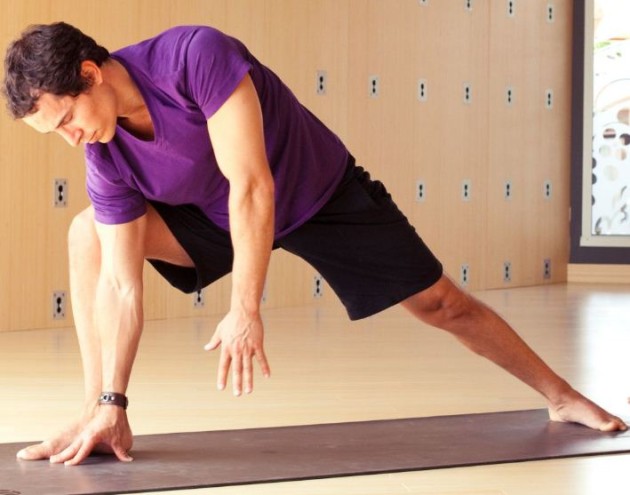
Stretching
By incorporating a regular flexibility program into your exercise routine you will:
– improve circulation
– improve range of motion
– improve posture
– decrease joint stiffness
– decrease muscle tension
– improve performance (there is limited evidence to support this)
– improve your ability to relax
– allow time for mental training, such as visualization
A complete stretching routine can take as little as 10 minutes. The best time to stretch is after you have warmed up and the muscles are warm. The best time to perform your flexibility routine is after exercise. This is when the muscle is the warmest and when you can use the relaxation. Focus on stretching the muscles you use the most during your specific exercise or sport.
Proper Stretching Technique
Perform balanced stretching. This means you should always stretch the muscles on both sides of your body evenly. Don’t stretch one side more than the other side.
Avoid over-stretching. Never stretch to the point of pain or discomfort. You will feel slight tension or a pull on the muscle at the peak of the stretch.
Go slow! Always stretch slowly and evenly. Hold the stretch for about fifteen seconds and release slowly as well.
Never bounce or jerk while stretching. This can cause injury as a muscle is pushed beyond it’s ability. All stretches should be smooth, and slow.
Don’t forget to breathe. Flexibility exercises should be relaxing. Deep easy, even breathing is key to relaxation. Never hold your breath while you stretch.
Recommended Stretches
Hamstrings Stretch. Sit on the floor with one leg straight in front of you and the other leg bent (with the sole of the foot touching the inside thigh of the outstretched leg). Keep your back straight and lean forward from the hips. Slide your arms forward toward your outstretched foot. Stop when you feel a pull in the hamstring. Hold for 15 seconds and repeat with the other leg extended.
Hip Flexor – Psoas Stretch. Lie on your back. Bend your left leg and bring it toward you. Grasp your left knee gently with your right hand and pull it slightly down and to the right until you feel a stretch. Turn your head to the left. Your right leg should stay flat on the floor. Hold for 10 seconds and repeat with the other leg.
Low back. Lay flat on the floor with knees bent. Use your hands to pull them toward your chest. Lift your head and shoulders off the floor until your head is approximately six inches from your knees. Cross your ankles. Gently rock yourself back and forth in this position for 30 seconds.
Standing Quad Stretch. Lie on your right side with your right knee bent at a 90-degree angle. Bend your left leg and hold onto the ankle with your left hand. Gently pull your left heel in toward the left side of your butt. As soon as you feel a stretch in your left quad, slowly lower your left knee toward the floor behind your right knee. Hold for 15 seconds and repeat with the other leg.
Standing Calf Stretch. Stand an arm’s length away from a wall with your feet shoulder-width apart. Slide the left foot back approximately 18 inches, keeping the knee straight and both heels flat on the floor. Bend your right knee and slowly move your pelvis forward until you feel a stretch in the calf and Achilles of the left leg. Hold for 15 seconds and repeat with the other leg.
Read more articles from our Stretching section.
Check out our Physiotheraphy section, every Monday a new story! Tomorrow read about Preventing Volleyball Injuries.